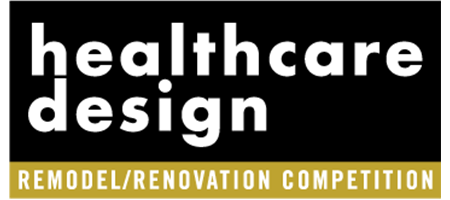In December 2021, Montefiore Health System (Bronx, N.Y.) added to its network Northeast Orthopedics & Sports Medicine (NEOSM), the largest orthopedic practice in the lower Hudson Valley with 20 physicians and nine locations spread across Rockland, Orange, and Westchester, N.Y., counties. Occupying mostly older and outdated buildings, the facilities were ripe for consolidation, and Montefiore saw an opportunity to develop a one-stop flagship to serve the organization’s more than 1,400 existing patients as well as grow its patient base.
But before breaking ground on the Montefiore Einstein Comprehensive Orthopedic and Spine Center (MECOSC), in West Nyack, N.Y., the owner and project team, including developer Aspect Health (Westport, Conn.) and architecture and design firm Gensler (San Francisco), first wanted to understand what existing patients desired in a new facility and what features would compel them to follow the practices to a new location for their entire orthopedic care journeys, from consultation to surgery to rehabilitation and physical therapy.
To do that, the project team would utilize a data-driven approach informed by surveys with patients and staff to “ensure that the project responds to patients’ and staffing needs,” says Tina Macica, assistant vice president of design and construction at Montefiore Health System. “But also what are the impacts of the design on patient satisfaction? How do you retain those patients at a new location and make them want to come back over and over?”
Digging deep into patient loyalty drivers
To identify the factors driving patient loyalty, the Gensler Research Institute (GRI), a practitioner-led data and insights program established by Gensler in 2005, surveyed 1,438 patients from the nine orthopedic outpatient care facilities over four months from July to October 2021, with 651 responding (45 percent response rate).
GRI had also recently completed another survey, the Outpatient Healthcare Experience Index (OHEI), to guide strategies for outpatient facility design. In both surveys, patients were asked to rate their first impressions of their visits to the outpatient facilities and how those impressions affected their desire to return, with the input used to help guide design decisions on the Montefiore project.
The research highlights that the top drivers of outpatient loyalty include a strong first impression, positive pre-visit interactions, intuitive wayfinding, a variety of seating options, and an inviting and efficient exam room that fosters patient-physician conversations.
As the research underscores, “thoughtful design isn’t just aesthetic; it’s a catalyst for patient trust and loyalty,” says Chris Romano, vice president of development and construction at Aspect Health.
For example, in the OHEI survey, 76 percent of patients signaled reluctance to revisit a facility due to having a negative impression of the quality of the facility’s exterior and/or exam rooms. These experiences also were shown to have a cascading effect.
Of the 52 percent of patients who rated a facilities’ exterior quality low, 38 percent also rated the exam room quality low. But of the 48 percent of patients who rated the exterior quality high, only 35 percent also rated the exam room quality high.
The studies also found that the arrival experience—including lobbies, waiting rooms, and registration—has an outsized impact on whether a patient has a positive or negative experience during an outpatient visit. For example, the surveyed patients said transparency and clear pathways to their destinations help to instill trust and ease anxiety, while crowded waiting areas lacking comfortable seating are sources of stress, as is a lack of privacy when filling out registration forms.
Other important considerations identified by patients were biophilic design and access to nature, with 57 percent of patients saying they were more likely to return to a facility if the waiting area featured designs inspired by nature.
Applying the research findings to design
After research was completed, the project team then began the process of translating its findings into the planning and design of the orthopedic and spine center.
Opened in June 2024, the 60,000-square-foot orthopedic specialty facility houses 40 patient exam rooms, three imaging suites, an MRI suite, four orthopedic operating rooms (ORs), three procedure rooms, 14 pre- and post-surgical bays, private rehabilitation rooms, and a large open-floor gymnasium.
To create a positive first impression, Matt Leonard, technical director at Gensler and senior project architect on the shell portion of the project, says the design team created a “big, bold gesture” at the front of the building with a 2-story, floor-to-ceiling glass curtain wall to create a sense of transparency.
Then, to deliver the connection to nature that patients sought, landscaping is integrated into the parking lot and perimeter, adding pops of color. Furthermore, a backdrop of mature trees on the site is reflected in the materiality of the building with vertical wood-slat accents separating the panes of glass and in pop-out window frames on the sides and back of the building.
Inside, the double-height lobby offers immediate and clear views to the four main pathways to care services: imaging and physical therapy on the left, and ambulatory surgery and outpatient surgery on the right.
Ju Hyun Lee, design director at Gensler and interior designer on the project, says the initial design of the main lobby also included a concierge-style reception desk but that the intuitive wayfinding negated that need.
“It’s so easy to see where you’re going that the client didn’t even want a main reception desk,” she says. Instead, each department is accessible through a sliding glass door and has its own check-in desk and waiting area that’s aligned along the glass curtain wall and filled with natural light as well as comfortable seating options for both groups and individuals.
To address patients’ desire for biophilic design features, the project team added warm-toned wood accents in the ceilings and walls in the waiting areas, while understated wall-coverings and artwork feature nature-inspired patterns, such as shapes emulating soft mountain peaks on the wall in a corridor leading to exam rooms and a radiology suite.
“We’re using a lot of the ombre aspect of nature, with colors and textures inspired by nature, embracing serenity and creating calm,” Lee says.
Turning to the exam room, Gensler designed a consultation space within the room where the patient and physician are face to face on opposite sides of a small, half-circle table built into the wall, with an overhead lamp and screen where the physician can project X-rays and other information from a laptop or tablet.
This set-up is clearly delineated from the exam area, giving patients a stronger sense of control over their experience and helping them to feel like they are a part of their care plan, Lee says.
Collaborative approach fuels intentional results
Aspect Health CEO Chris Smith says the collaborative approach to the research and design of the project resulted in a facility that is intentional in how it delivers on the essentials for both patients and caregivers.
“From the design of the façade to the finishes and placement of windows, all of these aspects are intentional to elevate the experience. We do this through listening and collaboration,” he says.
Romano adds: “All of these things together give a patient that sense that they’re in a place of excellence, that they’re going to receive the best services available to them because care is prominent in every detail.”
Robert McCune is senior editor of Healthcare Design and can be reached at [email protected].
Montefiore Einstein Comprehensive Orthopedic & Spine Center project details
Location: Nyack, N.Y.
Completion date: June 2024
Owner: Aspect Health / Montefiore Health System
Total building area: 60,000 sq. ft.
Total construction cost: Not disclosed
Cost/sq. ft.: Not disclosed
Architect: Gensler
Interior designer: Gensler
Engineer: Jaros Baum & Bolles (mechanical engineer), Michael Horton Associates, Inc. (structural engineer), Thornton Tomasetti (structural engineer)
Project details are provided by the design team and not vetted by Healthcare Design.











